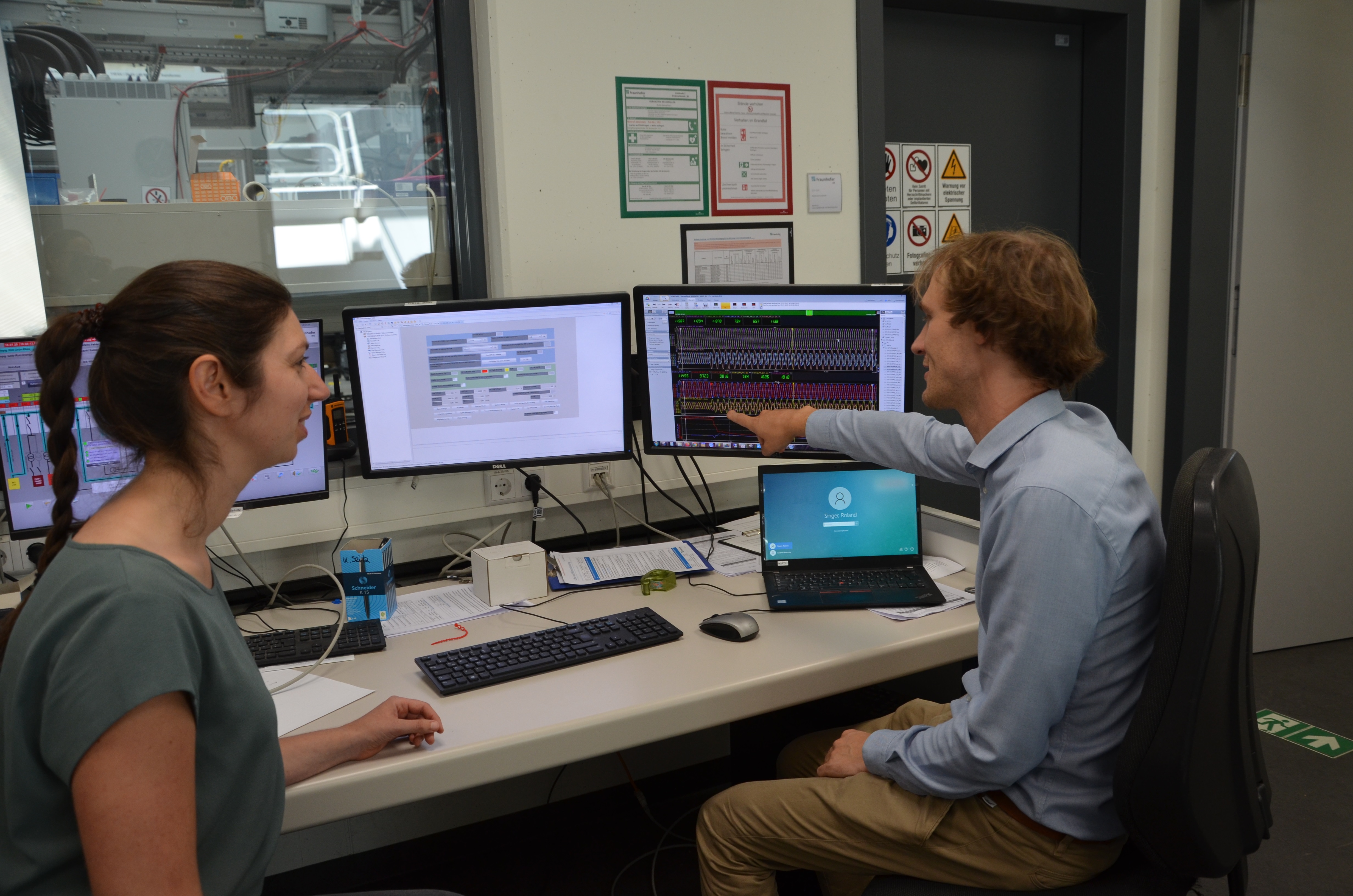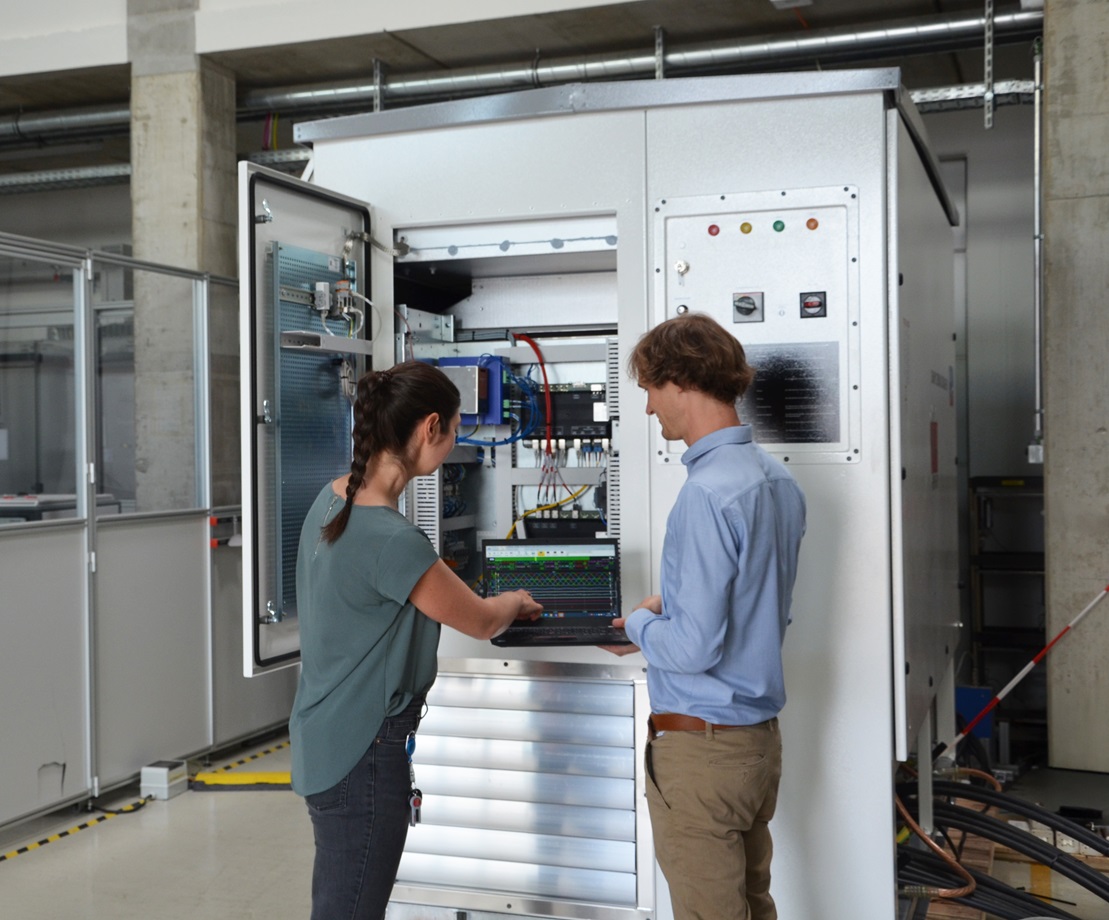News #20
Project "SUREVIVE": How Distribution Grid Systems Stabilize the Electricity Grid
In the course of the energy transition, the proportion of converter-based generation plants in the electricity grid is increasing rapidly, while conventional power plants are being taken off the grid at the same time. In the “SUREVIVE” project, a consortium from research and the energy industry is investigating for the first time in the German distribution grid how grid-forming inverters and a large battery storage system can stabilize the electricity grid. In preparation for the field test, the Fraunhofer Institute for Solar Energy Systems ISE is testing the systems in its multi-megawatt laboratory.
The Federal Ministry for Economic Affairs and Energy's (BMWK) roadmap for system stability stipulates that converter-based systems must also contribute to grid stability in the future. They will then ensure the constant voltage and frequency that is currently still secured by conventional power plants, whose rotating generators provide the instantaneous reserve.
As part of “SUREVIVE”, the interaction and stability of grid-forming inverters in the distribution grid will be tested under real conditions for the first time in Föhren (Rhineland-Palatinate) from October. In contrast to conventional storage systems, which are primarily used for load shifting, grid-forming inverters can actively contribute to grid stability together with battery storage systems. The storage system with an output of 20 megawatts and a capacity of 55 megawatt hours is connected directly to a transformer station.
To minimize the risks in real grid operation, Fraunhofer ISE is testing the grid-forming properties and the behavior in comparable scenarios in its multi-megawatt lab in advance, as can be expected later in the field test. For this purpose, a multi-megawatt inverter, which will be part of the large-scale storage system in Föhren, including a battery storage system with five megawatt hours will be put to the test in Freiburg.
“In recent years, we have intensively developed the technology of grid-forming inverters and used our experience to make a significant contribution to the development of test procedures,” reports Roland Singer, Group Manager for Converter-Based Grids at Fraunhofer ISE. “With our laboratory, we are therefore ideally prepared for testing grid-forming inverters.”
In addition to the laboratory tests, extensive simulations of the systems are carried out at Fraunhofer ISE and validated using the results of the laboratory tests.
As a result of the field test, a best practice guide for the connection and operation of grid-forming inverters in distribution grids is to be created, which will provide orientation for system manufacturers, project planners, installers and operators as well as distribution grid operators. In addition, generalized methods for stability assessment in electricity grids when using grid-forming systems will be developed. “We want to initiate an industry dialog so that the broad establishment of grid-forming inverters is made possible as quickly and efficiently as possible,” explains Rebekka Denninger, project manager of the SUREVIVE project at Fraunhofer ISE.
“SUREVIVE” runs until June 2028 and is supported by the German Federal Ministry for Economic Affairs and Energy (BMWE) as part of the OptiNetD funding call. Project partners include Westnetz as consortium leader, Schoenergie, the IFK at the University of Stuttgart and various associated partners.

Last modified:
